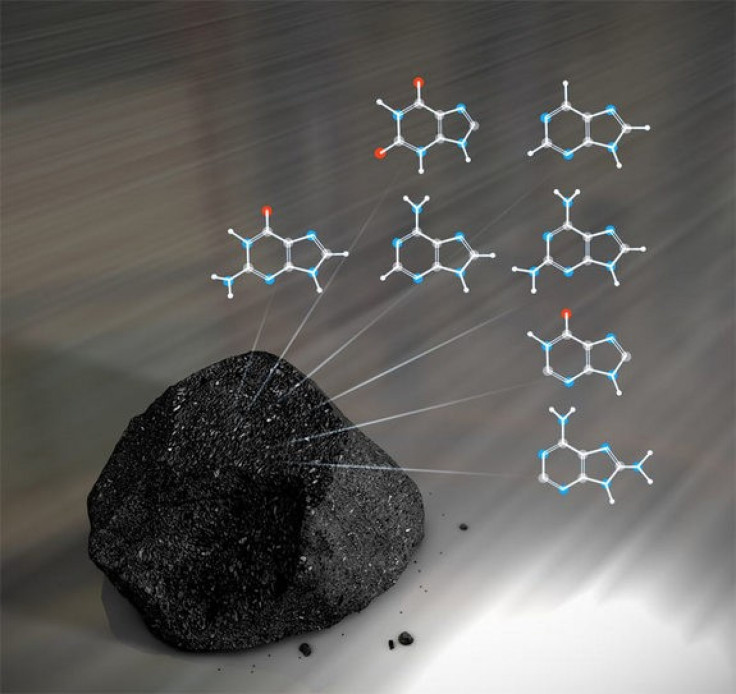DNA Fragments in Meteorites Hint at Extraterrestrial Origins of Life

Scientists believe that DNA building blocks embedded in meteorites found in Antarctica originated in space, bolstering the theory that meteorites crashing into earth may have carried some of the seeds of life.
All living things rely on DNA to store and pass on genetic information, and one of the essential components of DNA are the four nucleobases that crisscross its double helix. Scientists discovered two of those nucleobases, adenine and guanine, in the meteorites. That lends some evidence to the theory, known as panspermia, that the basic elements of life are present throughout the universe.
"[M]eteorites may have served as a molecular kit providing essential ingredients for the origin of life on Earth and possibly elsewhere," write the authors of the report out today in the Proceedings of the National Academy of Sciences.
Scientists have been discovered DNA components in meteorites for decades, but they were never able to dispel reservations that the components may have come from humans or other creatures that contaminated the meteorites. The Antarctica meteorites contained forms of nucleobases that had never been seen before and were not present in the surrounding soil, suggesting a distant origin.
"People have been finding nucleobases in meteorites for about 50 years now, and have been trying to figure out if they are of biological origin or not," study co-author Jim Cleaves, a chemist at the Carnegie Institution of Washington, told SPACE.com. "Finding nucleobase compounds not typically found in Earth's biochemistry strongly supports an extraterrestrial origin."
Previous laboratory experiments produced similar nucleobases to those present in the Antarctica meteorites using only ingredients found in asteroids, a finding that suggests such nucleobases could indeed have formed in space.
"It would be awfully coincidental if our laboratory chemistry produced the same things we saw in the meteorites," said Michael Callahan, the NASA scientist who analyzed the space rocks.
© Copyright IBTimes 2024. All rights reserved.











